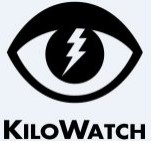GREEN + “GREEN” = A GREAT DEAL FOR EVERYONE
By: Larry Erwin
A major drawback to popular types of renewable energy generation (solar and wind) is that they require lots of space to generate substantial quantities of usable power.
While coal-fired or nuclear plants have fixed footprints of hundreds of acres, they generate large quantities of power, with the same being true for geothermal and hydropower sources.
Wind and solar installations need to be in locations with reasonable access, but without taking large swaths of land otherwise used more feasibly in terms of revenue generation.
Large wind farms in populated rural agricultural locations might have hundreds of turbines spread over a large area. The farmer owning the land below each only has to sacrifice a small percentage of acreage normally used for grazing or growing crops. The trade-off on that acreage loss is the monthly lease payment that’s received.
On the other hand, solar farms, while generally receiving acceptance by the general public, still have the issue of sheer panel coverage area required to generate electricity in large quantities. But, thinking outside the box, what if…?
Some estimates are that currently up to 30% of fossil fuel use and 70% of water consumption relate to crop production. Could we somehow combine sciences – physical (solar) and life (botany/zoology) – to create “green” benefits in both areas? And, could this be one step toward more efficiently and effectively feeding an ever-growing world population? Meanwhile, farmers might give up only very small amounts of pasture or tillable acreage, all the while receiving the benefit of energy generation that could be used to help offset energy costs of their farming operations or even to sell back to the grid. Voila! Welcome to the world of “agrivoltaics”.
An emerging trend is to combine solar installations with areas where agricultural production (livestock grazing or crop cultivation) might otherwise seem to be the highest and best use of acreage.
For pasture areas, the solar installation structure can be adapted to support grazing by smaller animals (chickens, geese, ducks, or sheep) or larger ones (cattle, pigs, horses, or goats). In areas where alfalfa or other grass crops are grown, there is a possibility for vertical panels that still allow for harvesting by larger agricultural equipment.
Some food crops (especially certain fruits) can actually benefit from protection provided by a solar installation structure. This includes protection from wind, hail, and excessive sunlight (yes, some plants are scorched by excessive periods of direct sunlight). There’s also the effect of the Light Saturation Point, beyond which additional sunlight provides no benefits and may, in fact, be a detriment (for instance, creating higher moisture requirements as the plants “sweat” and become “thirsty”). Truthfully, the potential for water savings alone might outweigh all of the other benefits!
Since some plants are shade-tolerant, while others are shade-intolerant, adapting the style and arrangement of panels to the crop to be grown can easily be accomplished.
Not only are there benefits for the plants, but also for the solar panels themselves. Some data shows that panel efficiency could improve by up to 10% due to the cooling effects of having the plants beneath them.
For a quick look at some of the research and potential benefits of agrivoltaics, check out the videos below. The first three (by our friends Matt Ferrell of “Undecided”, Dave Bourlace of “Just Have A Think”, and Ricky Roy of “Two Bit da Vinci”) each give a general overview; watch at least one of them (all three if you have the time, since each does provide some unique information). Then, the next two show some of the promising work done by the National Renewables Energy Lab and Oregon State University’s College of Agriculture Sciences.
Undecided: https://www.youtube.com/watch?v=lgZBlD-TCFE
Just Have A Think: https://www.youtube.com/watch?v=2ue53mBUtNY
Two Bit da Vinci: https://www.youtube.com/watch?v=4GE7hgzLmic
Oregon State: https://agsci.oregonstate.edu/newsroom/sustainable-farm-agrivoltaic
